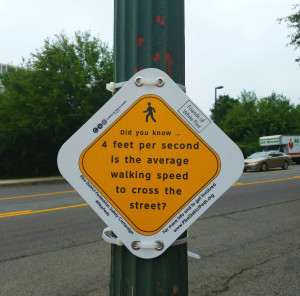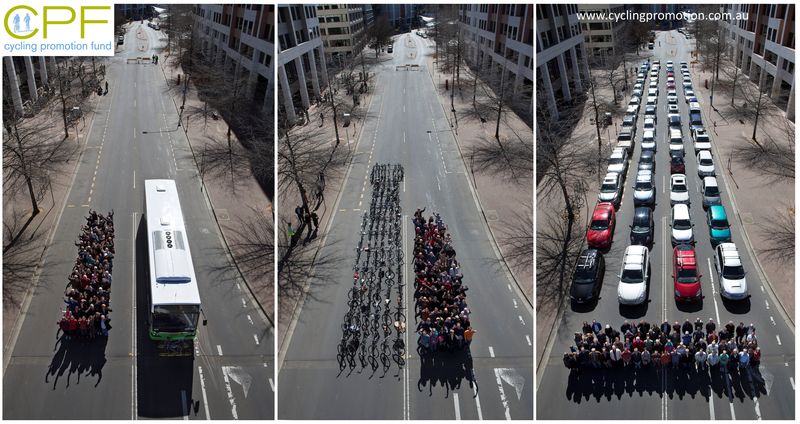FOR IMMEDIATE RELEASE
September 20, 2016
CONTACT
Pete Tomao, Montgomery County Advocacy Manager
Coalition for Smarter Growth
(516) 318-0605
pete@smartergrowth.net
Amy Ginsburg, Executive Director
Friends of White Flint
(301) 919-1609
amy.ginsburg@whiteflint.org
Advocates Launch Campaign to Improve Pedestrian Safety in Pike District
NORTH BETHESDA, MD – Dozens of signs with safety tips are going up on sidewalks, near crosswalks, and other highly-trafficked areas in the Pike District (which surrounds the White Flint Metro station in North Bethesda), in an effort by advocates to make walking safer and more attractive in the burgeoning area.
The signs are the most visible part of a broader effort, called the Pike District Pedestrian Safety Campaign, launched today by the Friends of White Flint and Coalition for Smarter Growth. The campaign highlights needed pedestrian-friendly infrastructure improvements, educates pedestrians on the safest way to navigate the existing environment, and invites people who walk in the area to share their own suggestions for making the Pike District more pedestrian-friendly.


“The Pike District is in the midst of an exciting transition. Guided by the 2010 White Flint Sector Plan, the area is becoming a vibrant, livable community where residents and visitors can walk to the farmer’s market, meet up with friends at happy hour, or catch a movie without having to drive to every destination. We’ve already seen a significant increase in pedestrian activity thanks to walkable projects like North Bethesda Market, North Bethesda Gateway, and Pike & Rose,” said Amy Ginsburg, the Executive Director of Friends of White Flint.
Ginsburg continued, “While walkability is improving, the road network in this area was really designed for cars more than for people. That can create a pretty inhospitable, even dangerous, environment for people on foot. Fortunately, there are a number of ways we can improve this situation in the near-term with simple and affordable solutions. Increasing crosswalk visibility, adding pedestrian refuges, and making walk signals automatic will be a huge help. That’s what this campaign is all about: practical solutions for a better pedestrian experience. We look forward to working with Montgomery County and the State of Maryland to make walking in the Pike District safer and easier.”
“We continue to see strong demand for walkable neighborhoods across the DC region, and the Pike District is no exception,” said Pete Tomao of the Coalition for Smarter Growth, which works for more walkable communities and transit investments region-wide. “Improving conditions for pedestrians will not only make thing safer for those who are already here, it will help the area attract new residents and businesses. Implementing these solutions now moves us closer to the Rockville Pike that county officials envisioned in 2010. It is our hope that we are able to push the Pike District to live up to its potential as a transit-oriented, walkable downtown,” said Tomao.
To learn more about the campaign or to get involved please visit pikedistrictpeds.org
###

